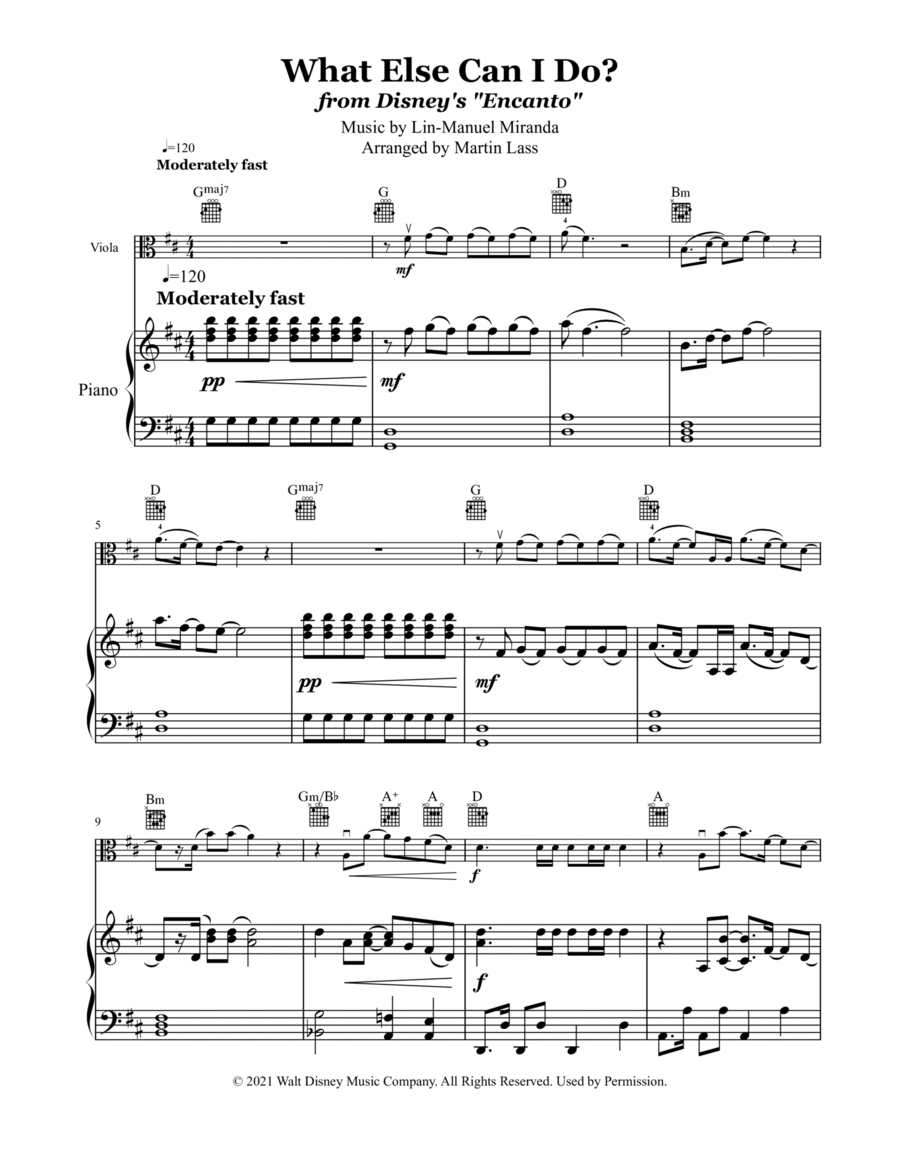Piano,Viola - Level 3 - Digital Download SKU: A0.589188 By Diane Guerrero & Stephanie Beatriz. By Lin-Manuel Miranda. Arranged by Martin Lass. Broadway,Latin,Musical/Show,Pop. Score and part. 10 pages. MA Lass & I Lass #198253. Published by MA Lass & I Lass (A0.589188). In this Level 2.5 - 3.0 (Intermediate) arrangement, Martin Lass has arranged the hit song, What Else Can I Do?, for solo viola and piano accompaniment. Guitar chords and chord boxes are included. What Else Can I Do? is a song from Disney's 2021 animated feature film, Encanto, with music and lyrics written by Lin-Manuel Miranda. It was released by Walt Disney Records as part of the film's soundtrack in November, 2021. The soundtrack has achieved many accolades and charted No. 1 or Top Ten across the world, including No. 1 on US Billboard Hot 100. Wikipedia notes that, to develop the soundtrack, the composer, Miranda, and team visited Colombia—the setting of Encanto—to study the country's music. Consequentially, the album is rooted in genres such as vallenato, cumbia, bambuco and rock en español, making use of the traditional music instruments of Colombia, and incorporates salsa, tango, reggaeton and bachata styles alongside pop, hip hop, folk and musical theatre elements. In the film, the songs are performed by the Madrigals, who are a multigenerational family with magical powers granted to them by a miracle; the lyrical themes revolve around individuality, self-worth, transgenerational trauma and familial love. This arrangement has been specifically tailored for intermediate-level viola while retaining all of the original elements of the song, as well as some original interpretative elements. The lead line combines some of the different voices in the original song. The key has been changed from the original A minor/C major to the more viola-friendly B minor/D major, which changes the modulation halfway through the song from the very challenging Bb minor/Db major to the more friendly C minor/Eb major.
